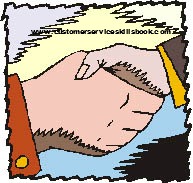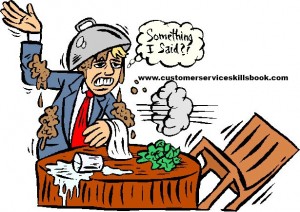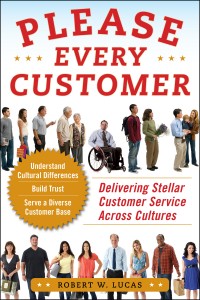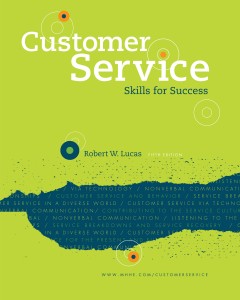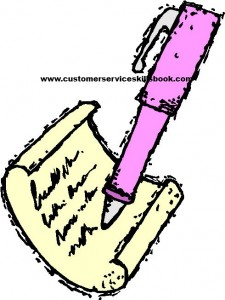The Impact of Technology on Customer Service
Organizations of all sizes in different parts of the world are struggling to harness the power of service technology to deliver the best customer service possible. The wonderful thing about changing technology is that through the use of new innovations, even small organizations can create an image equal to their larger counterparts since someone visiting their website or contacting them in other ways have no idea how many employees or assets they have. The key is that once a customer does contact an organization, that customer service representatives and other employees who interact with them must project a positive and professional image during interactions. Creating a positive customer-centric service culture is the job of everyone in the organization from upper echelons to front line employees.

In years past, service-based technology consisted of the telephone and facsimile. Now, there are many new developing technologies (e.g. Skype, smartphones, tablets, and cloud-based solutions) and web-based tools available (e.g. blogs, Facebook, Twitter, YouTube, Pinterest, and StumbleUpon) as organizations strive to gain and hold their edge over local and international competition.
Billions of dollars are being spent worldwide to create systems through which customers can access products and services to satisfy their ever-changing needs and whims. This is occurring because the quality of service received or perceived by customers can either enhance or diminish an organization’s brand and reputation. In a global economy, diversity abounds. Each current or potential customer also brings along cultural values, beliefs, and backgrounds based on their background. All of these elements influence customer expectations and perspectives.
As organizations strive to hang onto market share and customers while eking out some degree of profit is a sluggish economy, they are seeking viable alternatives to be responsive to customer needs, requests, problems, suggestions and complaints. Technology-based service delivery systems are viable options.
Many organizations have dedicated customer service professionals to staff their telephones or call centers and communicate with customers via the Internet, blogs, email, and other technological means. Some organizations also outsource and off-shore their service functions to call centers, marketing, and similar companies in order to reduce direct, ongoing staff expenses from their budgets and receive tax breaks. Unfortunately, these cost-saving strategies do not always work because many consumers have begun to rebel against having to talk to people located in other countries, whom they sometimes feel do not understand them or their needs.
Larger organizations continue to add and upgrade hardware and software capable of contacting and serving customers and tracking service-related analytics while adding human resources and training to meet customer needs.

In smaller organizations, and those who have yet to use alternative servicing strategies to maximum potential, the responsibility for answering the telephone and providing service through other means often falls on anyone (e.g., administrative assistant, salesperson, driver, partner, or owner) who is available when a customer visits (face-to-face or via the Internet or computer), the telephone rings, or an answering system receives a message.
No matter the size of your organization, everyone must accept ownership for service delivery in order to provide positive global service and ensure that customers are satisfied in order to maintain some degree of loyalty.
For additional ideas, strategies and techniques on how to provide the best customer service possible, check out Customer Service Skills for Success, Please Every Customer: Delivering Stellar Customer Service Across Cultures, and How to Be Great Call Center Representative.
About Robert C. Lucas
Bob Lucas has been a trainer, presenter, customer service expert, and adult educator for over four decades. He has written hundreds of articles on training, writing, self-publishing, and workplace learning skills and issues. He is also an award-winning author who has written thirty-seven books on topics such as, writing, relationships, customer service, brain-based learning, and creative training strategies, interpersonal communication, diversity, and supervisory skills. Additionally, he has contributed articles, chapters, and activities to eighteen compilation books. Bob retired from the U.S. Marine Corps in 1991 after twenty-two years of active and reserve service.
Make Money Writing Books: Proven Profit Making Strategies for Authors by Robert W. Lucas at Amazon.com.
The key to successfully making money as an author and/or self-publisher is to brand yourself and your company and to make yourself and your book(s) a household name. Part of this is face-to-face interaction with people at trade shows, library events, book readings, book store signings, blogging or guest blogging on a topic related to their book(s). Another strategy involves writing articles and other materials that show up online and are found when people search for a given topic related to a topic about which the author has written.
If you need help building an author platform, branding yourself and your book(s) or generating recognition for what you do, Make Money Writing Books will help. Bob’s popular book addresses a multitude of ideas and strategies that you can use to help sell more books and create residual and passive income streams. The tips outlined in the book are focused to help authors but apply to virtually any professional trying to increase personal and product recognition and visibility.
In my book Customer Service Skills for Success, I define customer service as “the ability of knowledgeable, capable, and enthusiastic employees to deliver products and services to their internal and external customers in a manner that satisfies identified and unidentified needs and ultimately results in positive word-of-mouth publicity and return business.”


